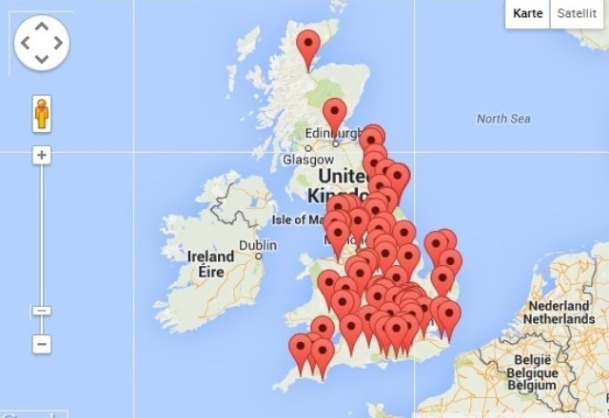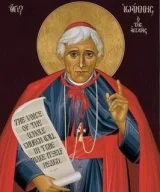While reflecting on the life of the late Sister Mary Clare, I must admit that questions have come to the surface which I had pushed aside many times in the past but really still have no answer to.
While I can understand the various reasons often given why larger numbers of Anglo-Catholic priests and parishes have not entered the Ordinariates (financial and family questions, marital problems, the fact that many parish members were perhaps not really convinced Anglo-Catholics but just worshiped in their geographical parish, etc.) but none of these arguments really applies to religious communities of brothers and sisters, and most specifically of monks and nuns. In fact I can see no reason why a considerable number of these has not been received into the Ordinariates more or less intact, bringing with them their buildings and all their property.
They have now had more than five years since the promulgation of Anglicanorum Coetibus to begin and complete their discernment process – even if they waited until the Sisters of the Blessed Virgin Mary had become settled in their own new monastery, more than a year has passed since then. Where are they all? What is keeping them in the Anglican Church?
Is their loyalty so much greater than their absolute frustration at the state of doctrinal and moral chaos in which the Church of England finds itself? Are they able to close the cloister doors and not notice what is happening in the Church around them? Dare I ask, is their hatred, dislike, suspicion of Rome so great that true unity with the See of Peter was never really something that they hoped and prayed for? Is Justin Welby a nice man who makes them feel comfy? Is “The Society” functioning better than feared, even better than the Flying Bishop scheme?
Whatever it is, they are not knocking at the door in droves (or if they are, the negotiations are taking an eternity).
I am reluctant to pray that loyal Anglicans should leave the Church where they are at home, this would really be spiritual proselytism. But I am inclined to intercede for those who want to enter the full communion of the See of Peter but are being held up by material or other concerns. This Sunday’s Gospel reminded me of the Franciscan Friars who at the beginning of the thirteenth century went out just as Jesus had sent out his disciples, with a stave, sometimes not even with sandals, and established friaries all over France, Britain etc, even before the death of St. Francis himself in 1226.
David Murphy












It may be that the religious communities do not come over in their droves because their members still feel that the Anglican Church is their home. I can think of no other reason than this.
Please forgive me for being surprised that that is still the case.
Well you never know. People, or groups of people are sometimes reluctant to make changes.
It may be that some are still trying to make up their minds. There could be further developments.
How can one be surprised that people choose to remain where they are? They will always be the majority.
My surprise, EPMS, was at the fact that they still FEEL that the Anglican Church is their home.
David
I am not so sure that “they will always be the majority”. Did you study the recent survey of social trends which indicated that 3% of 18 to 24 year olds self identify as belonging to the C of E, whilst 6% self identify as being Catholics. The survey also concluded that half of the people who self identify as C of E are over 67. In 20 years they will almost all be gone.
These are interesting facts, Paul, but I think EPMS intended to say that those who decide to stay where they are whatever will always be the majority. Most people will stay in their accustomed environment, however uncomfortable the situation becomes.
Aren’t you just saying “I am surprised that their experience did not mirror my own?” Yes, we’re always surprised by that, but we shouldn’t be.
Not my own (because my story is very different) but that of a vast number of people including nearly all of their Flying Bishops (there are twelve former bishops all told in the three Ordinariates!) and hundreds of their priests, yet only a couple of dozen religious worldwide.
Yes, I should not have implied that I knew anything about your story, which of course I don’t. I just meant that your “doctrinal and moral chaos” is another person’s “struggle to interpret itself to a changing society” or whatever. Are there twelve former bishops of the “Canterbury communion”? In North America, only Msgr Steenson is a former TEC/ACC bishop. The others, and at least 90% of OCSP clergy, and perhaps 80% of the laity, left mainstream Anglicanism, generally decades ago, for “continuing” bodies, or in some cases left other Protestant denominations for these groups. I believe that the situation in the OOLSC is similar. And unfortunately, the fate of half the “vast numbers” who leave any denomination, including the Catholic church, every year is that they lose their faith altogether and go nowhere, so one should be very cautious about stirring up discontent where none is apparent.
Are we going to quibble about who was a bishop and who was not? 7 bishops from the Anglican Communion, 6 bishops from the TAC and 1 from the Charismatic Episcopal Church are now in the Ordinariates, making in fact thirteen all told -´not fourteen as it might seem, because one person was bishop in both the Anglican Communion and the TAC (Mgr Mercer). Two of these bishops have not been ordained Catholic priest, nine have been appointed Monsignor. However three of the Anglican Communion bishops were diocesan bishops and four were “Flying bishops”. So what was your criticism, EPMS?
And as for stirring up discontent, that was not my intention, as you well know. I am merely curious as to why comparatively few religious joined the Ordinariates. Jeff Hirst in his comments below has attempted to give an answer, but my surprise remains. Sorry.
David Murphy
I became a Catholic in the old-fashioned way in 1994. Prior to that I had connections with the Community of the Resurrection at Mirfield, and even then the community was very divided. Some, like the then-Bishop Robert Mercer followed his conscience into Continuing Anglicanism and is now home in the Church through the Ordinariate. Others were totally in favour of the way the C of E was moving. This appears to be still the case, with some members of CR being fully involved with RooT and others not! I suspect that their situation is not unique. In the women’s communities, the position is even more complicated, with some communities under the care of bishops of “The Society”, while others have members who have been ‘ordained’.
PS – how could I forget Fr Augustine Hoey, a former member of CR and now a Benedictine Oblate, nearly 100 years old and living in Walsingham, who since becoming a Catholic has given a huge amount of service to the Church, most notably as a spiritual director and confessor.
In the US, the All Saints sisters in Maryland have elected not to be part of the Ordinariate even though they became Catholic. They are no longer using their carefully developed Anglican offices and rites, as far as I know. This seems like l a loss both ways. Does anyone know why they decided on that course?
David,
You wrote: In fact I can see no reason why a considerable number of these has not been received into the Ordinariates more or less intact, bringing with them their buildings and all their property.
This paragraph clearly is not an accurate reflection of the situation in England, where Anglican religious who decided to enter the ordinariate (the Sisters of the Blessed Virgin Mary and the Walsingham sisters) have had to leave their convents and the members of their communities who wished to remain in the Church of England (CoE) and make new arrangements — even becoming wholly dependent upon Catholic religious communities for accommodations and their subsistence for an extended period during the transition. As I understand it, all property of the CoE, including monasteries, friaries, convents, cathedrals, parish churches, and schools legally belongs to the crown, which holds it in trust for the CoE, so there is no way to take it. This creates a bar that is quite high.
If you are speaking to the situation here in the North America or in Australia, the matter is quite different. Here in the States, The Episcopal Church (TEC) has very few religious communities — though those that do exist own their own monasteries and convents, and thus can bring their property into the Catholic Church — but only if they come as an intact community, as the Friars of the Atonement (Graymour, New York) did nearly a century ago and as the community of All Saints Sisters of the Poor did more recently. Nevertheless, the only order of any size in The Episcopal Church (TEC) that is known for Anglo-Catholic worship is the Society of St. John the Evangelist, and the members of that order who live near me are quite liberal in their polity — they embrace ordination of women and blessing of homosexual unions, for example, so you might not regard them as true Anglo-Catholics. But in any case, they are generally supportive of the current polity of TEC. I don’t have actual numbers, but my impression is that the situation in Canada and in Australia is similar to that here in the States.
Norm.
I was not aware that C of E religious communities are not the owners of their own property. If that is so, it answers my main question (entering the Ordinariate intact, lock, stock and barrel).
As regards the split in the two English communities, one was quite amicable, and they even wanted to continue living together – it was a tragedy that they were not able to. But I am so blue-eyed that I thought there would be very homogeneous Anglo-Catholic communities who might be of ONE mind (like All Saints Sisters in Baltimore) but there is not one in the C of E apparently.
Putting together a motley crew of searching individuals in a new religious institute is naturally a lot more difficult, but may I pick up on an idea mooted by Fr. Ed Tomlinson – the reviving of the Gilbertine Order, the only English Order, now extinct, which had houses for men and women.
David
I believe that one of the All Saints sisters in Baltimore remained an Episcopalian but continues to live with the community.
David,
You wrote: I was not aware that C of E religious communities are not the owners of their own property. If that is so, it answers my main question (entering the Ordinariate intact, lock, stock and barrel).
As regards the split in the two English communities, one was quite amicable, and they even wanted to continue living together – it was a tragedy that they were not able to. But I am so blue-eyed that I thought there would be very homogeneous Anglo-Catholic communities who might be of ONE mind (like All Saints Sisters in Baltimore) but there is not one in the C of E apparently.
IIRC, it was precisely the issue of ownership of the property and the stipulations as to its use that compelled the sisters who chose to come into the Catholic Church to leave the property when they did so — and similar stipulations that forced the Walsingham sisters to leave their former community. This is actually a matter of secular law.
Norm.
There was a women’s religious order, the Servants of the Sacred Cross, prominent in the Anglican Catholic Church of Canada at the time when the formation of the Ordinariates was being discussed. One can see some photographs here taken at that time: https://foolishnesstotheworld.wordpress.com/2012/10/03/whats-going-on-with-the-servants-of-the-sacred-cross/ . Their website says that they have been recognised under canon law but I am not sure how current any information on the site is.